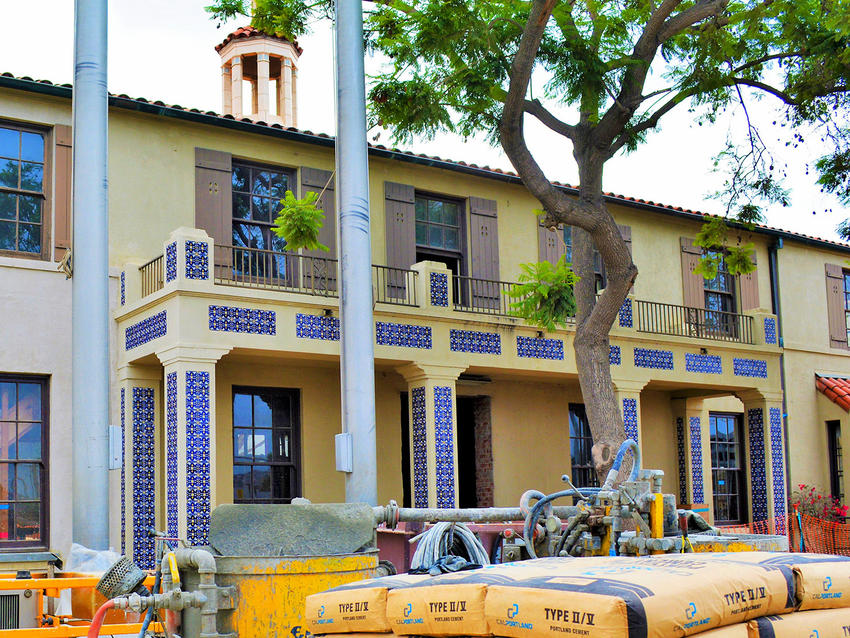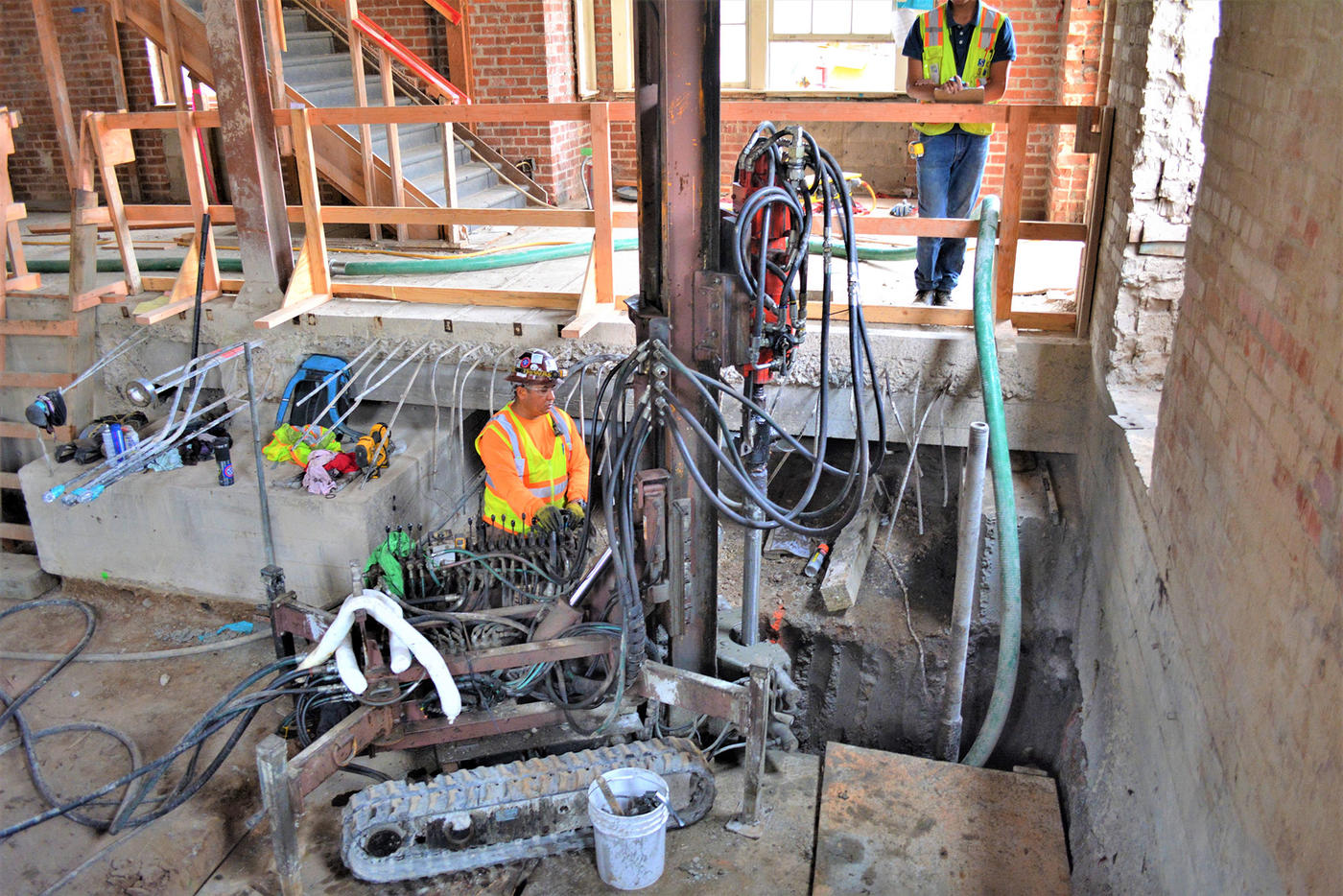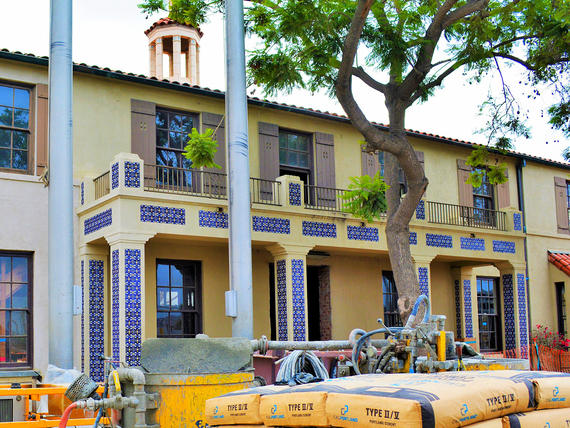Keller’s design-build micropile solution, installed in tight access within a historic structure, helped preserve an important part of history within the project schedule and budget.

The project
Phased reconfiguration and expansion of the San Ysidro Land Port of Entry, the busiest land border crossing in the western hemisphere, was initiated by the General Services Administration (GSA). As part of the Phase Three work, the 1933 US Customs House, which is listed on the National Register of Historic Places, was to be seismically upgraded to meet current design standards.
The challenge
Challenging subsurface conditions consisted of 3 to 5 ft of undocumented fill comprised of clay, silt, clayey sand, and clayey gravel over alluvial and slopewash deposits. The retrofit work needed to be accomplished within the historic Customs House structure where clearance was limited to 13 ft in places. Protecting the integrity of the structure during the work was paramount.
The solution
Micropiles are well-suited for difficult drilling low headroom conditions and installed without vibration, the latter of which was critical in preserving this historic structure. The micropiles were designed as friction elements and installed in short 5-ft sections by compact equipment. Each micropile extended 15 to 30 ft below the pile cap elevations to terminate in a competent stratum. Keller installed 141 micropiles, only six of which were outside the Custom House, as part of the overall retrofit work.

